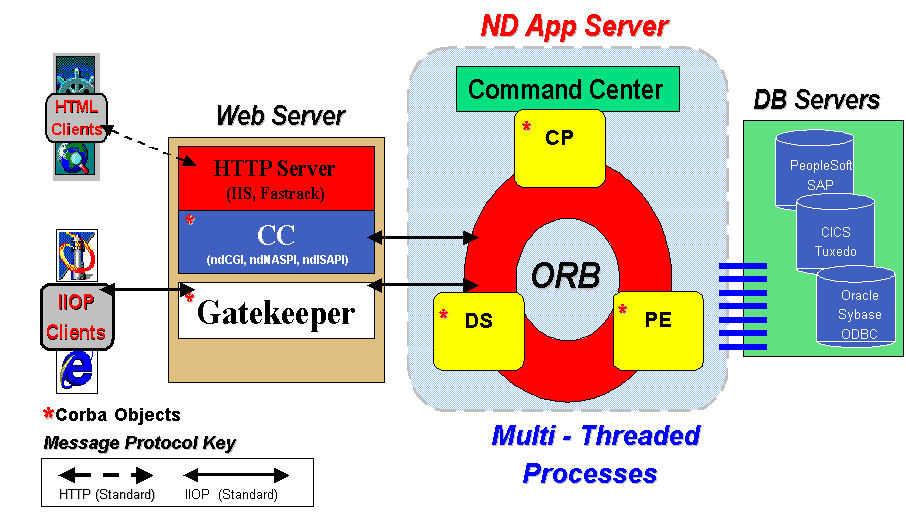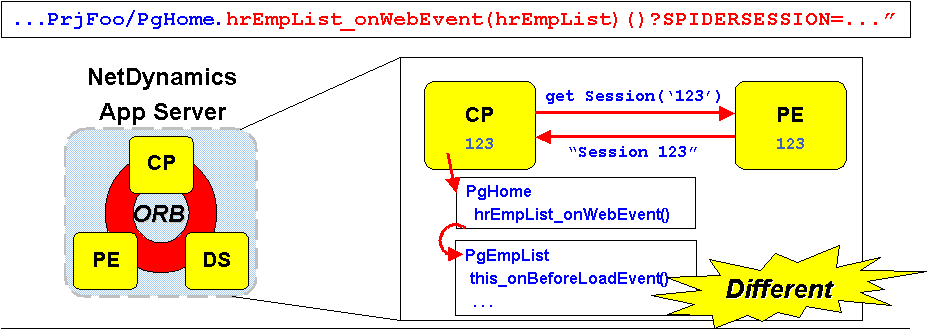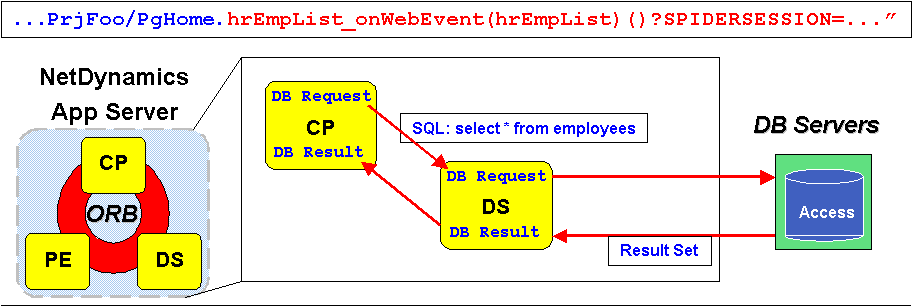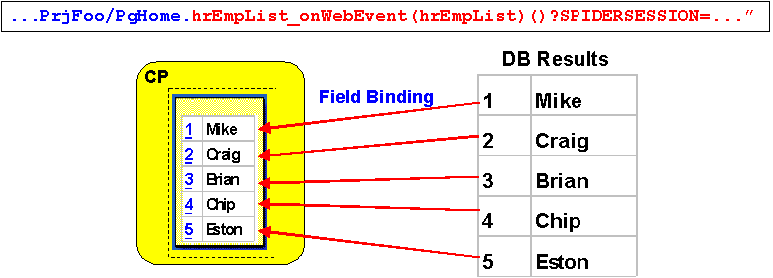

** Special Thanks to Craig Conover of NetDynamics, Inc. for the wonderful graphics!!!
Web Flow using a NetDynamics Application
Let's look at how these
parts work together to use an ND application.
When a
user requests a ND page from their browser, the URL is sent to the web
server and the web server will process the URL,
"http://www.company.com/cgi-bin/ndCGI.exe/PrjFoo/PgHome
then
it runs the CC (ndCGI.exe) which receives the /Project/PgHome as
its parameters. The CC will forward the parameters to the CP on the ND
Application Server.

Next
the CP receives the ND project and page parameters and it will read all
of the project's objects into local cache (this actually only happens for
the first request of the first user), then it will create a new Session
for the new user. It does this because it did not receive a Session ID
with page request. The PE is responsible for generating the next session
ID and returning it to the CP. The CP will continue with the page load
event process for pgHome.
Now the CP finishes creating the HTML for the page request and sends it
back to the CC on the web server. The CC relays the HTML back to the HTTP
server. The web server returns the HTML back to the requesting browser.
The browser will parse the HTML (just like any other page), download embedded
graphics, applets, etc. and finish displaying the HTML.
If the client now requests a connection to a database (this would be a second request to the ND application), things change just ever so slightly. The CP will check for cached project objects and the CP will receive the session id from the URL. When the CP gets a session id it will contact the PE for the session objects for session id "123".

The URL would also contain a method, typically an _onWebEvent(). Let's
say that this page is bound to a data object that selects employees
to be displayed. This will prompt the CP to send a DB request to the identified
DB. The DS will make a proper connection to the DB and send the request.
The DB server returns the result set to the DS which will in turn send
it to the CP for display on the page.

The CP inserts the results, mapping data fields from the result
set (data object) to the display fields on the page (this is known as binding).
Now the CP will send the page to the CC on the web server who will return
it to the browser.


Contents What is NetDynamics? The Event Model